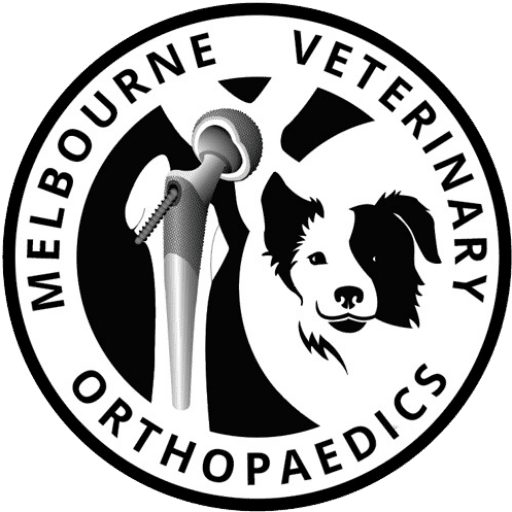TPLO / cruciate / ACL
Cost of TPLO Surgery
MVO is boutique and can offer a variety of options for dogs having TPLO surgery Base costing is $3K + GST which includes:
Sedation, pain relief injections, anaesthesia / anaesthesia monitoring, intra- venous fluids, use of the operating room, surgery with a specialist of signicant experience (25 yrs+ doing TPLO), implants (plate and screws), antibiotics (intra- venous and oral tablets for 5-7 days), wound dressing, postoperative knee x-rays on the day of surgery, nurse supervised patient recovery, complimentary rechecks
Extras to think about:
Pre anaesthesia blood test ($250) to check kidney / liver function Preop X-rays ($250) if not taken by local vet to measure slope of tibia.
Includes in-hospital comfort-care injections to ensure optimal recovery. Optional extras include advanced spinal pain-relief techniques ($150) and long-lasting topical comfort patches, ($75) for 3-4 d of ongoing pain relief.
Anti-inflammatory drugs ($50-75).
Closed joint surgery / Arthroscopy ($1650) which is less invasive or open joint surgery / arthrotomy ($550) to assess meniscus inside joint. Meniscal cartilages can be torn inside the knee and pet owners must understand that some meniscal tears that are identiied postoperatively (causing lameness) may have actually been present at the time of initial TPLO surgery but were not recognised and treated.
MVO advise all pet owners to have the joint explored by either open or closed surgery in addition to the TPLO. It has been shown that closed assessment of meniscal tears is far superior.
“MVO insurance” for extra 10% which covers all surgical complications that require further surgery. The most common revision procedure (7% risk) is plate removal if deep infection develops (some hospitals will charge $3K + for this)
Overnight care ($750) under the care of vet / nurse from Casey Pet Emergency 8 week postop x-rays $300 plus cost of sedation which ranges from $50-100 based on bodyweight.
Large dog surcharge: $150 / 30-40kg $250 / 40-50kg $350 / > 50kg
TPLO surgery for dogs
TPLO (Tibial Plateau Leveling Osteotomy) is a surgical procedure commonly performed to treat cranial cruciate ligament (CCL) injuries in dogs. This injury is similar to an ACL tear in humans and is a frequent cause of hind limb lameness. The TPLO surgery stabilizes the knee joint, allowing the dog to return to normal activity with less pain and a reduced risk of arthritis.
When Is TPLO surgery recommended?
- Chronic lameness: Persistent lameness that does not respond to conservative treatment like medication or physical therapy.
- Active or large breeds: Dogs that are active or large, as they put more stress on their knees, making TPLO a preferred treatment.
- Cranial cruciate ligament rupture: Either partial or complete tears of the ligament.
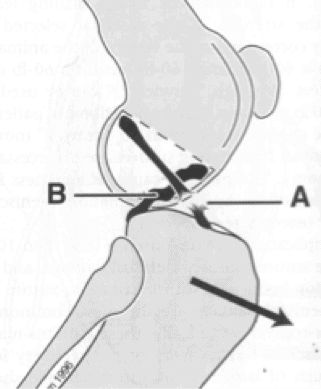
Original diagram in 1996 by Slocum, who invented TPLO 30 years ago !
A = torn ACL
B = intact PCL
Arrow shows direction of abnormal motion.
Important Facts
- Cruciate disease is not due to trauma in most dogs. It is degenerative condition and often affects young dogs. It often develops in both knees. You cannot prevent this unfortunately.
- Partial tears are more painful than complete tears as the ligament is innervated. The hallmark of a partial tear is pain during knee extension and a ‘toe-off’ stance with a positive ‘sit test’
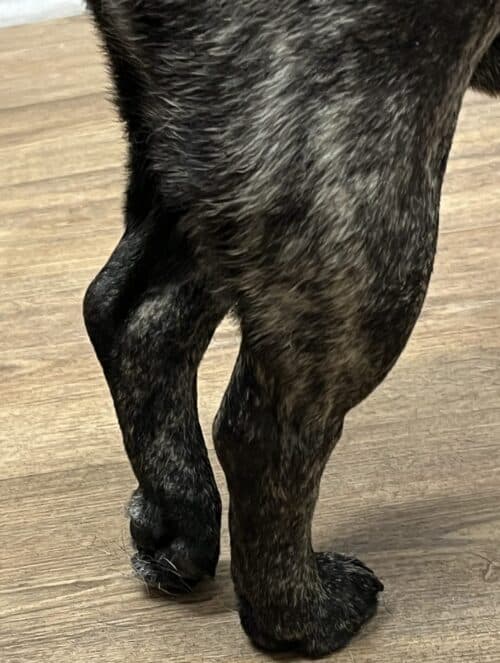
- There is no instability with a partial tear of the cruciate ligament making diagnosis more difficult. Your vet may not be able to diagnose an early partial tear without arthroscopy.
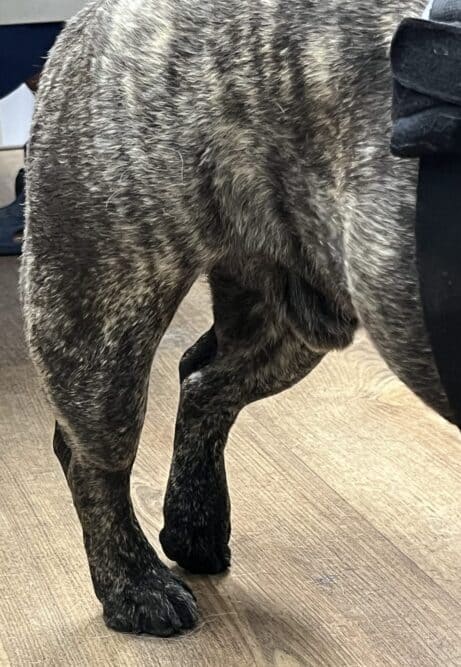
- The ligament tear invariably progresses and does not heal. Partial tears progress to complete tears in most dogs. Nowadays we do not wait and get better results with early surgery.

Normal cruciate ligament seen arthroscopically
- The ideal scenario is to identify and treat early disease allowing cruciate retention TPLO surgery whereby the bulk of the ligament is preserved and unloaded by performing a TPLO before the majority of the ligaments fibers are irreversibly torn.

- The ACL cannot be replaced like it can in human knee surgery using an autograft. Grafts fail in dogs and are not strong nor tight enough. Once the cruciate ligament is torn the knee is ‘cruciate deficient’ and we are trying to improve / restore athletic function to compensate for the absence of this important knee stabiliser function.
Knee arthroscopy in dogs is highly technical and requires extensive expertise. MVO offers this for cruciate disease.
Examination of the knee
Experience is required to diagnose cruciate disease. Meniscus tears inside the knee are even more difficult to diagnose, and are often overlooked. We cannot see the cruciate ligament on an x-ray, vets must know how to perform a detailed orthopaedic examination. Often this requires dogs to be restrained in lateral recombancy on an examination table. Some dogs will require chemical sedation or a muzzle.
Tibial compression test
Anterior draw test
The TPLO procedure
Pre-surgical preparation
- Diagnostic imaging: X-rays are used to assess the knee joint. We need to assess the degree of arthritis and your dogs tibial anatomy, most importantly the slope of the tibial plateau which is measured based on x-rays.
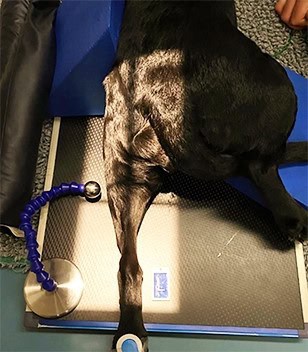

TPLO x-ray to measure slope
- Pre-anesthesia screening: Blood tests to ensure the dog is healthy enough for anesthesia.
Surgery
- Anesthesia: The dog is placed under general anesthesia.Incision: A surgical incision is made on the inside of the knee to expose the tibia.
- Tibial plateau leveling: The surgeon cuts and rotates the tibial plateau to flatten its slope. This adjustment changes the dynamics of the knee joint, eliminating the need for the CCL to stabilize the joint.
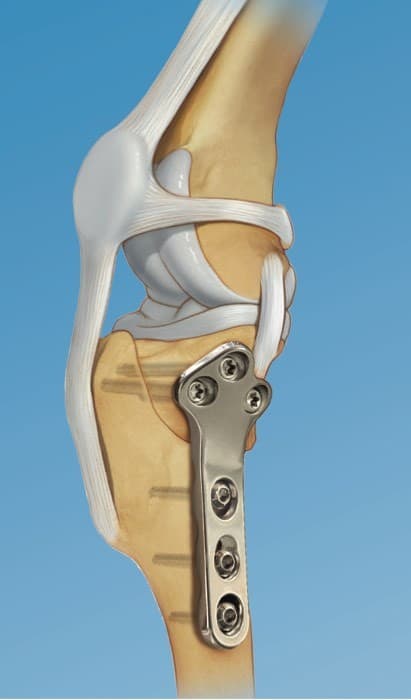
- Fixation: The rotated bone segment is secured with a metal plate and screws to ensure it remains in the correct position during healing.
- Closure: The incision is closed, and the dog is moved to a recovery area.
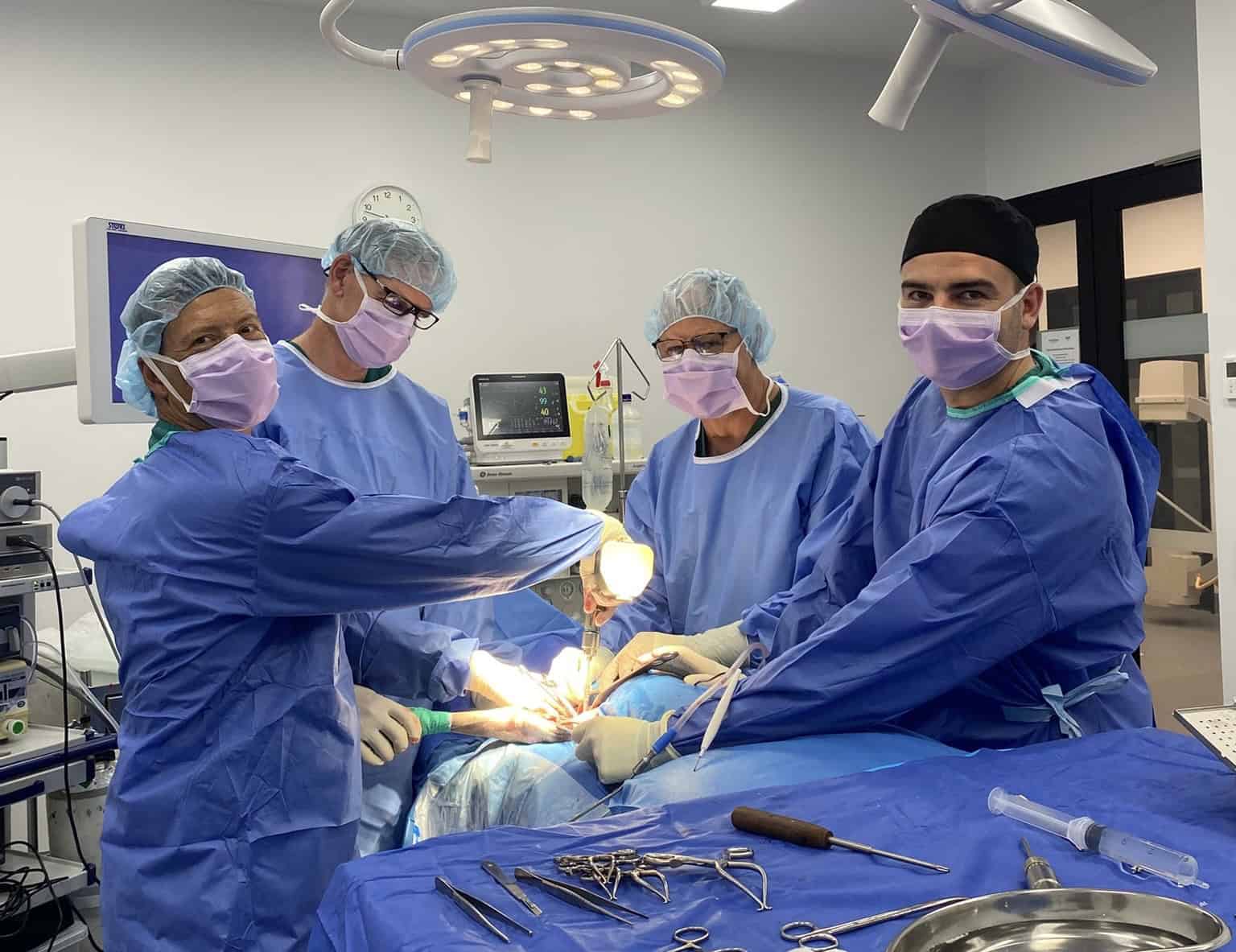
Dr Chris is an expert and Australia’s most qualified specialist in joint surgery. Here he is teaching other specialists how to perform advanced orthopaedics.
Postop X-rays
After TPLO surgery is important to confirm acceptable implants have been used. We take two orthogonal views to fully assess each aspect of the procedure, including bone cut position plate contouring and screw lengths.
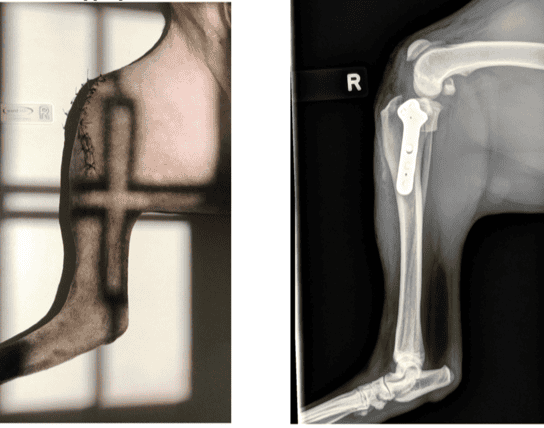
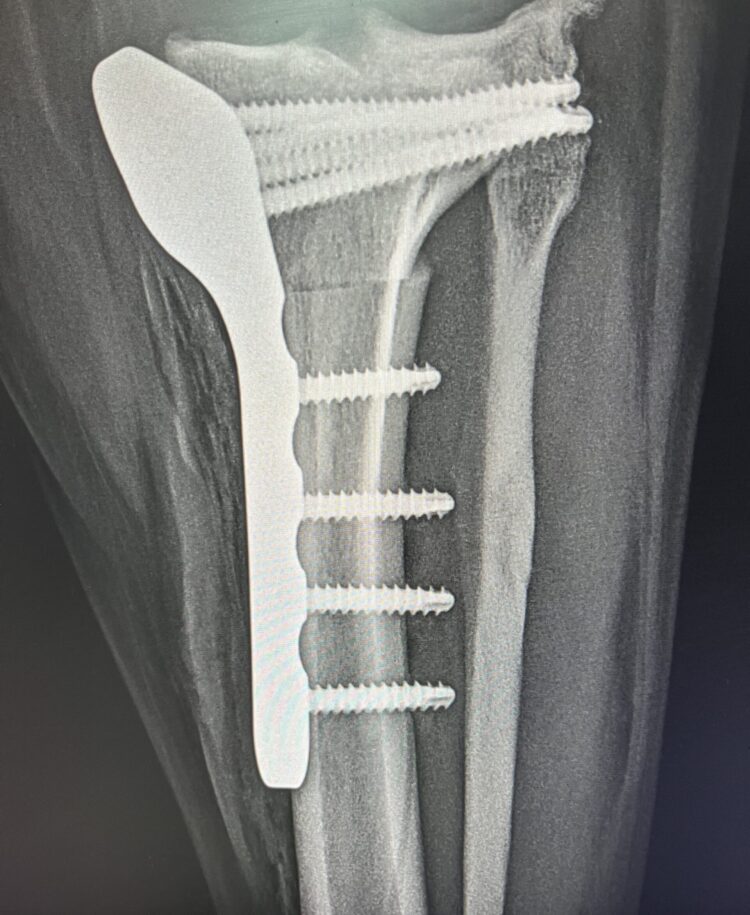
Immediate postop x-ray showing acceptable screw lengths
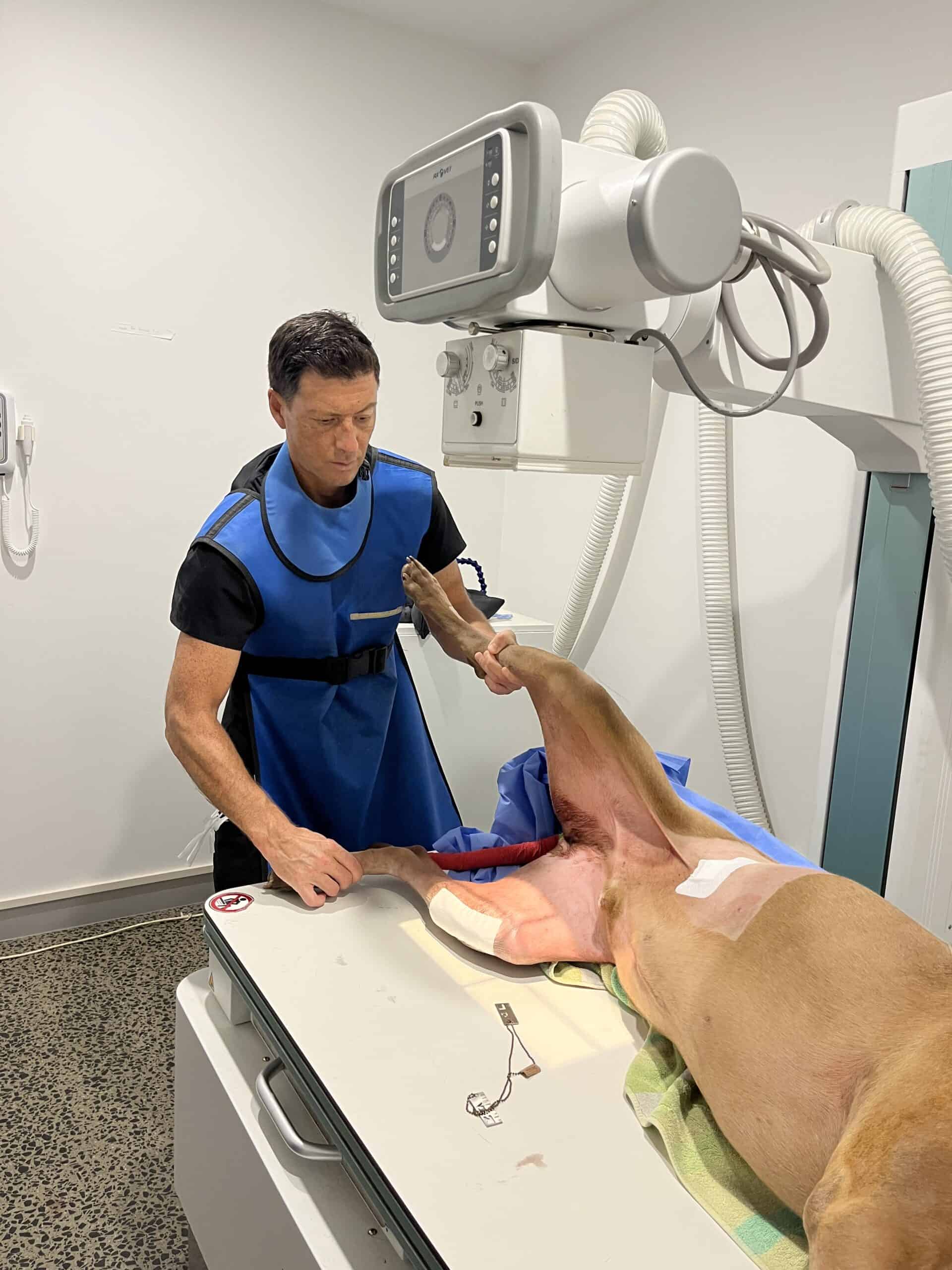
Dr Chris the surgeon taking postoperative X-rays after surgery to assess the operation.

Postoperative X-rays are taken of each patient as part of our basic package
Post-Surgical Care
Overnight Care the Night of Surgery
- Hospitalisation at MVO: Your dog can be supervised after TPLO overnight by experienced veterinarians and nurses at our main hospital. This is not available at our Satellite Clinics.
The benefits of overnight care are explained in more detail on the Postop Care page. Click here to view.
Post-operative care at home
- Pain management: Pain relief is provided through medications.
- Restricted activity: The dog’s activity is strictly limited, often involving crate rest and short, controlled leash walks.
Rehabilitation
- Physical therapy: Tailored exercises to strengthen the muscles around the knee and improve joint flexibility.
- Gradual increase in activity: Over several weeks, activity levels are gradually increased as the dog heals.
1 week after TPLO
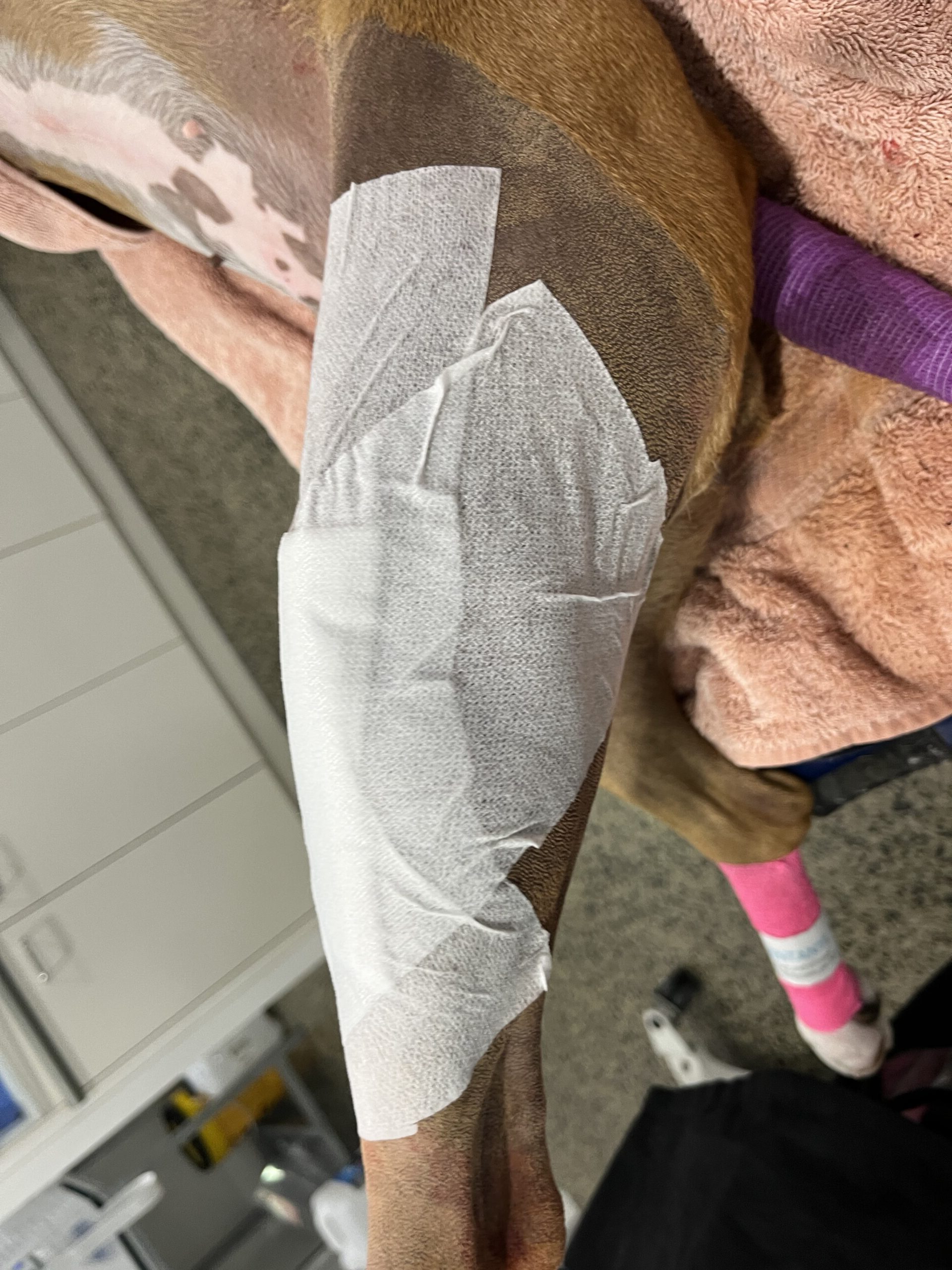
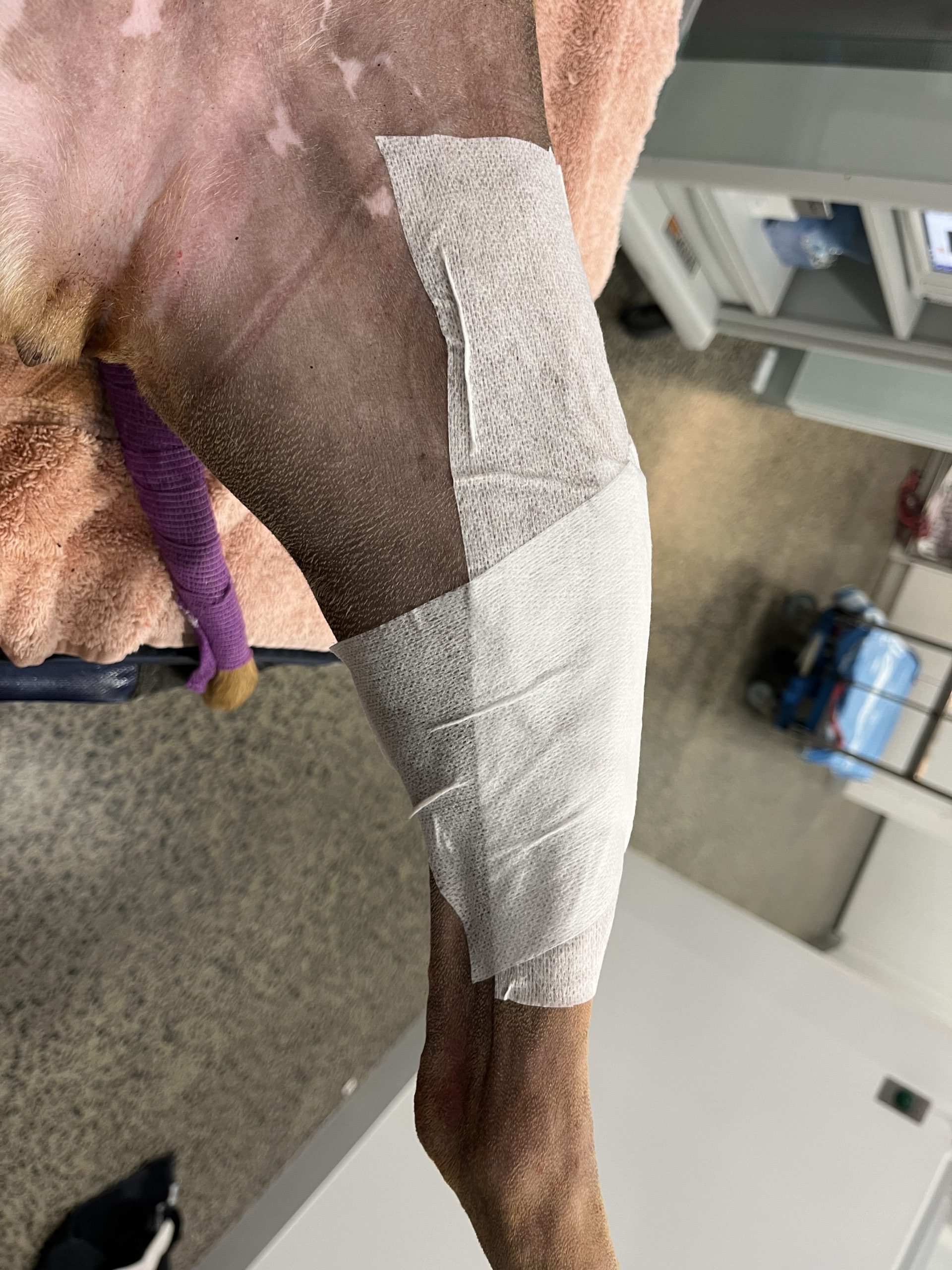
Adhesive wound dressing applied to cover and protect surgical incision.
Follow-up visits
- Check-ups: Regular veterinary visits to monitor the healing process with physical exams and follow-up X-rays. MVO offers postop re-checks 1 week and 6-8 weeks after surgery, or you are more than welcome to have your dog re-checked closer to home, at your local vet.
Recovery timeline
- First 2 weeks: Strict confinement with very limited activity.
- 4-6 weeks: Gradual increase in activity, usually including short, controlled leash walks.
- 8-12 weeks: By this time, most dogs have regained significant function and can return to normal activities.
- Full recovery: Typically occurs around 12-16 weeks post-surgery, though some dogs may take longer.
Bilateral disease
50% of dogs develop cruciate disease in their second knee.
Single-session bilateral TPLO can safely be performed to allow reduced treatment costs and one anaesthesia period for dogs. This can be discussed with the surgeon at the time of consultation and you will be given a recommendation based on patient factors such as weight and level of pain as well as costs.
I week after single session Bilateral TPLO
The Canadian Veterinary Journal
Outcome and owner assessment after single-session bilateral tibial plateau leveling osteotomy in 127 dogs.
The Canadian Veterinary Journal
Benefits of TPLO surgery
- Gold standard care: this procedure is the most researched and proven technique available to address cruciate disease in dogs Worldwide.
- High success rate: Most dogs regain full function of the leg and can return to normal activity levels.
- Stability: The procedure provides excellent stability to the knee joint, even in active or large dogs.
- Reduced arthritis progression: By stabilizing the joint, TPLO helps slow down the progression of arthritis, a common consequence of CCL injuries.
- Reduction of cartilage tearing: Each knee has two soft meniscal cartilages that are susceptible to injury when the ACL is torn or removed. TPLO surgery reduces this risk.
Risks and complications
- Infection: There is a risk of infection, as with any surgical procedure. To reduce the risk of infection: owners must ensure E-collar is used, wound dressing is maintained over incision and antibiotics are administered.
- Implant problems: The metal plate or screws may cause irritation or need removal.
- Non-union or delayed healing: In some cases, the bone may not heal as expected, requiring additional treatment.
- Cartilage tear: inside the knee, there are two meniscal cartilages, they can be torn before or after TPLO surgery. MVO can diagnose and treat tears using arthroscopic keyhole surgery.
Arthroscopic meniscectomy
Normal meniscus
50% of dogs with a complete cruciate tear have a torn meniscus before TPLO
Removal of torn meniscus tissue arthroscopically, using meniscotome and forceps
Removal of torn meniscus tissue arthroscopically, using an ablation tip
Removal of torn meniscus tissue arthroscopically with shaver
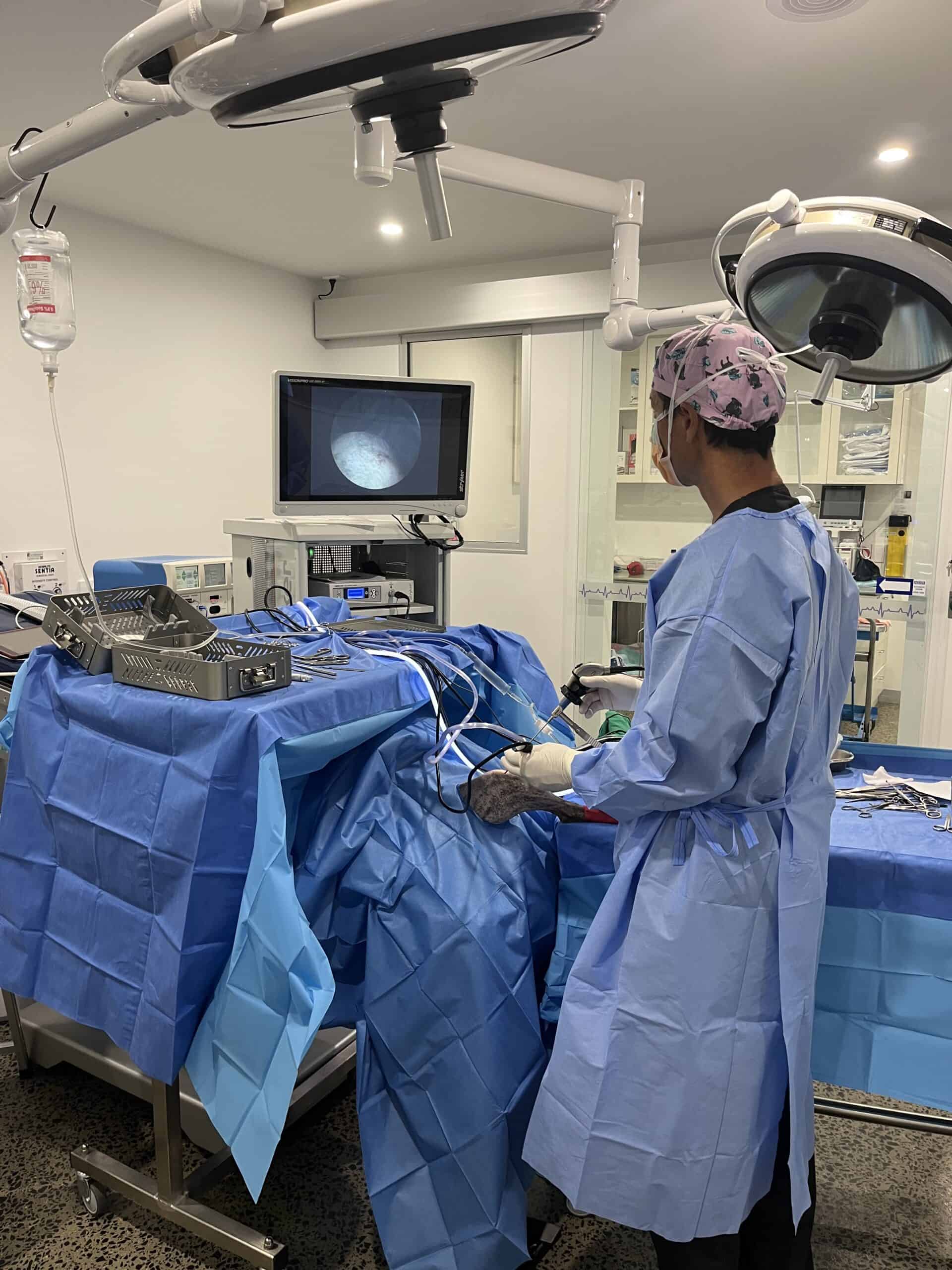
Dr Chris performing keyhole joint surgery on 21kg Kelpie with torn meniscus cartilage. Less painful and faster recovery.
Alternatives to TPLO
- Conservative management: Rest, anti-inflammatory medications, and physical therapy, sometimes recommended for older dogs or those with mild symptoms.
- Lateral suture technique: Uses sutures to stabilize the knee, often recommended for smaller or less active dogs. This has largely been superseded by more superior osteotomy techniques.
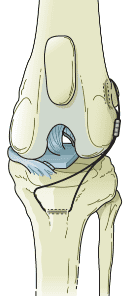
DeAngelis technique from 1971
- Alternative osteotomies: there are several variants of the TPLO procedure that can be performed to achieve a similar result. Greater than 80% of specialist surgeons prefer TPLO over all other techniques available. The following three images relate to a variant of the TPLO procedure where the curved cut is inverted. This is called a CORA-based levelling osteotomy or CBLO. This procedure is my complicated and expensive, but we can perform this at MVO in selected cases if we feel it is superior to a standard TPLO.
CBLO = inverted TPLO
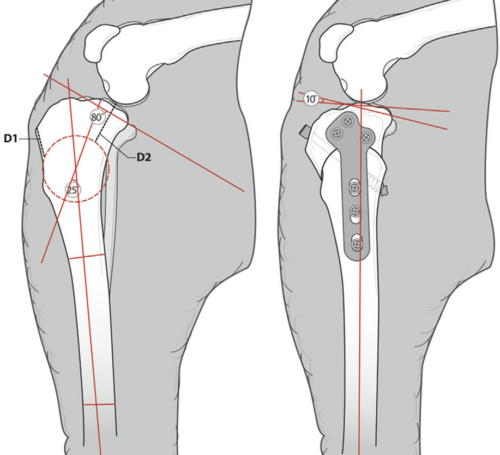
CBLO technique (please note: not TPLO)
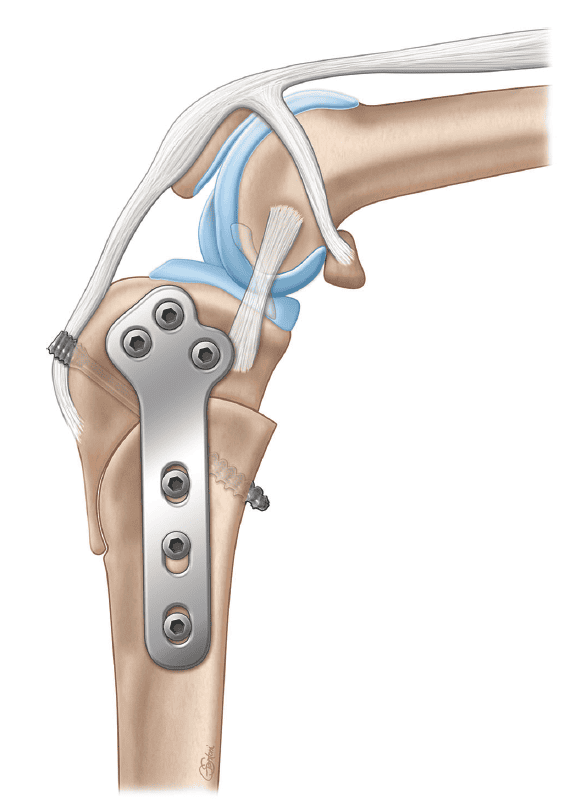
CBLO technique (please note: not TPLO)
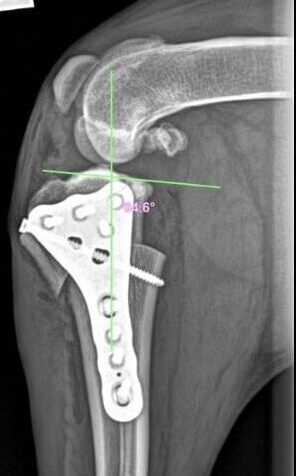
CBLO technique (please note: not TPLO)
Tibial advancement techniques developed in Europe, are also options but we feel they are inferior to TPLO. Below is a diagram of the original tibial advancement procedure called a TTA, here a cage is placed to open a cut.
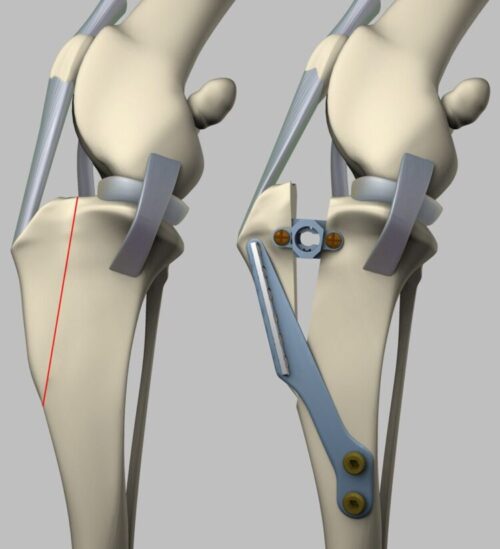
TTA technique (please note: not TPLO)
Prognosis
The prognosis after TPLO surgery is generally excellent, with most dogs returning to their previous activity levels. It is considered one of the most effective surgical options for treating CCL injuries in dogs, particularly in active or large breeds.
If you suspect your dog has a CCL injury or if your veterinarian has recommended TPLO surgery, consulting with a veterinary orthopaedic specialist surgeon can provide you with the best course of action tailored to your dog’s specific needs.
